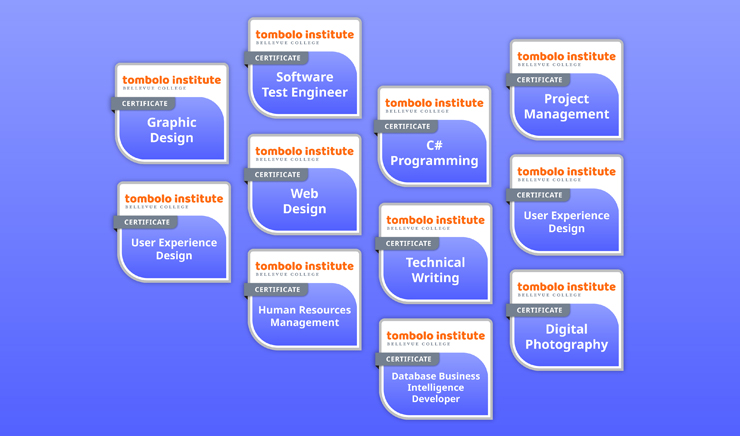Blog
Scrum – What It Is and Why It’s Important for the Tech Sector

12/6/2022
Angela Druckman, Tombolo Institute instructor and author, defines Scrum as an agile project management framework. She further describes Scrum as “a way of managing projects where you work in relatively short iterations, producing a working product, and then that working product is shared with key stakeholders. You get their feedback, you make adjustments as needed, and then you repeat. Over and over and over again.”
Experts agree that the strength of the Scrum process is based in its continuous experimentation and feedback loops that deliver value incrementally to key stakeholders. Sean Peek, a contributing writer to Business News Daily, says, “Whereas other project management methods emphasize building an entire product in one operation from start to finish, agile scrum methodology focuses on delivering several iterations of a product to provide stakeholders with the highest business value in the least amount of time.”
Scrum Theory From the Scrum Guide by Developers Ken Schwaber & Jeff Sutherland
- Scrum is founded on empiricism and lean thinking. Empiricism asserts that knowledge comes from experience and making decisions based on what is observed. Lean thinking reduces waste and focuses on the essentials.
- Scrum employs an iterative, incremental approach to optimize predictability and to control risk. Scrum engages groups of people who collectively have all the skills and expertise to do the work and share or acquire such skills as needed.
- Scrum combines four formal events for inspection and adaptation within a containing event, the sprint. These events work because they implement the empirical Scrum pillars of transparency, inspection and adaptation.
When assessing a particular project, Druckman looks for three potential flags that raise the risk of not having a successful outcome. Because the Scrum framework can mitigate those risks, it becomes a good choice for the project because of those risks.
The first flag is based on either or both of the following circumstances:
- The project is big in terms of duration and the number of people involved.
- The team undertaking the project has little experience with that type of project.
The second flag is based on the assessment that the project is facing one or more limited resources. Examples include:
- The Scrum Master asked for a team of 15 but was given seven instead.
- Management states unequivocally that there is a fixed budget amount for the project and not a penny more will be allocated no matter the project outcome. This creates significant risk if the team is faced with unexpected or evolving project requirements.
The third flag, which is the most common one, is when the project has emerging requirements. This happens typically when people are still figuring out what they want and cannot provide the project team all the project requirements up front.
Druckman emphasizes that if the project team is faced with any — or, in a nightmare scenario, all — of those flags, especially number three, they should use Scrum. To follow is a brief overview of how Druckman would approach a complex, long-term project.
“Let’s say I’ve been assigned a big, complex project that is expected to take a full year to complete — a timeframe that significantly raises the risk for things to go totally off the rails. The first thing the Scrum team would do to reduce the project’s complexity is to break down each process into manageable chunks, or predefined periods called sprints, which typically last two to four weeks. The goal of each sprint is to tackle the most important product features first, which enables the team to arrive incrementally at a working product, something that can be demonstrated to stakeholders. Before the team goes on to another sprint, the stakeholder feedback becomes incorporated into the project; for example, additional product features or requirements are added.”
Druckman likes to highlight a core principle in the Scrum framework, which is to “fail fast.” She states, “Fail fast means it is better to find out sooner rather than later if you are going down the wrong path before more time, money and resources are invested. In Scrum, we prefer to fail fast and then quickly correct course.”
As an instructor, Druckman brings her extensive consulting and professional experience, which includes consulting with Intel for 14 years at locations worldwide, to the classroom. She carefully designs her classes to reflect real workplace situations. For example, she incorporates many group exercises to reflect the fact that when you work on a Scrum project, you work in teams. She states, “The idea is to let participants practice together. I offer help so they can avoid the pitfalls that beginners often stumble into.” Druckman adds, “Another thing participants love about the in-person classes is that we spend pretty much the entire morning of Day 2 using Scrum to build a very simple product. Students tell us they get a lot out of those simulation exercises.”
Why get certified in Scrum?
Druckman encourages anyone who works in tech — project managers, developers, testers, quality assurance people, business analysts — to be versed in agile project management/Scrum.
Why? Simply put, Scrum has been a game changer for the tech sector. XDreamCode’s blog article Agile SCRUM, 5 reasons it transformed the IT industry sums up Scrum’s impact on the industry as follows: “When the Agile Scrum methodology met the IT sector, the results were impressive. Teams began to see their KPI’s closer and closer, the collaborative environment was strengthened exponentially, and end customers were the biggest beneficiaries.” Furthermore, as Druckman will tell you, “When you go on interviews with IT companies, be prepared because they will ask you, ‘What do you know about agile? What do you know about Scrum?’ Make sure you have something to show. A Scrum Master certificate would be ideal.”
###
Angela Druckman teaches the following Scrum classes at Tombolo Institute:
Certified ScrumMaster
Friday & Saturday, Jan. 27 and 28, 2023
Learn more about this class.
Certified Scrum Product Owner
Friday & Saturday, Feb. 24 and 25, 2023
Learn more about this class.
About Angela Druckman
Angela is a Certified Scrum Trainer and Agile Coach, and President of The Druckman Company. She has introduced Scrum and agile practices to thousands of students around the globe. She has worked with some of the largest technology, manufacturing, retail and financial services companies in the world, along with small start-ups, government organizations and not-for-profit entities. She is the author of “30 Days to Better Agile,” the definitive guide to resolving the toughest challenges in every agile implementation. She also writes for the blog The Agile Mindset.



